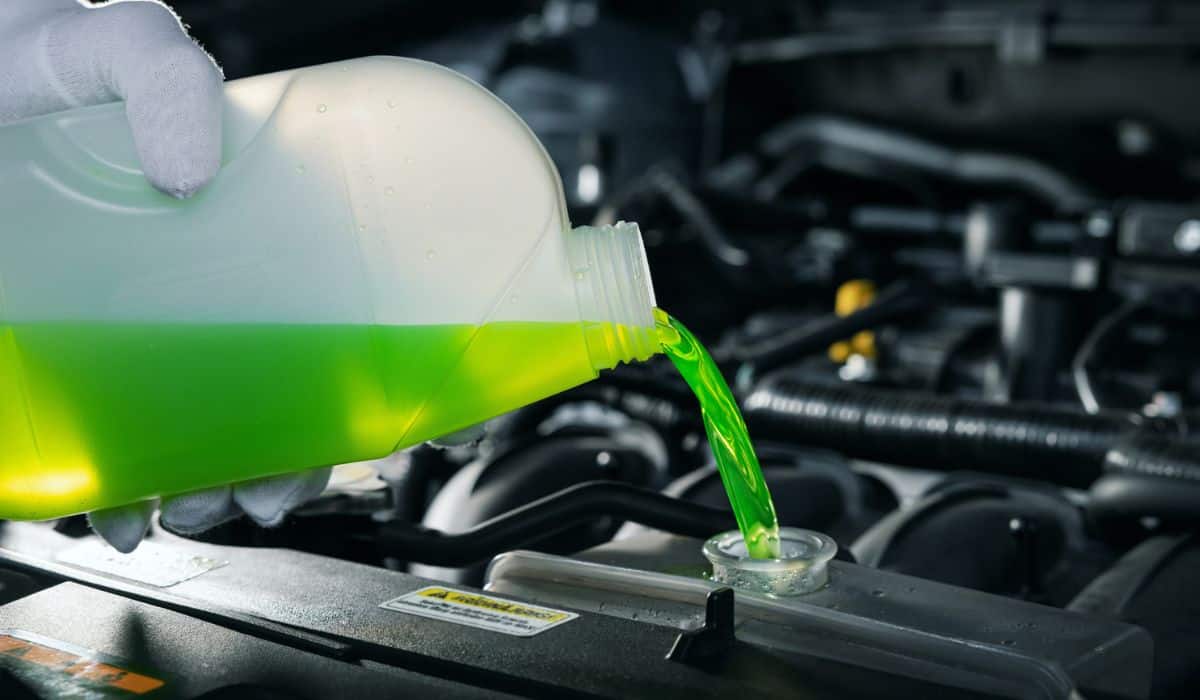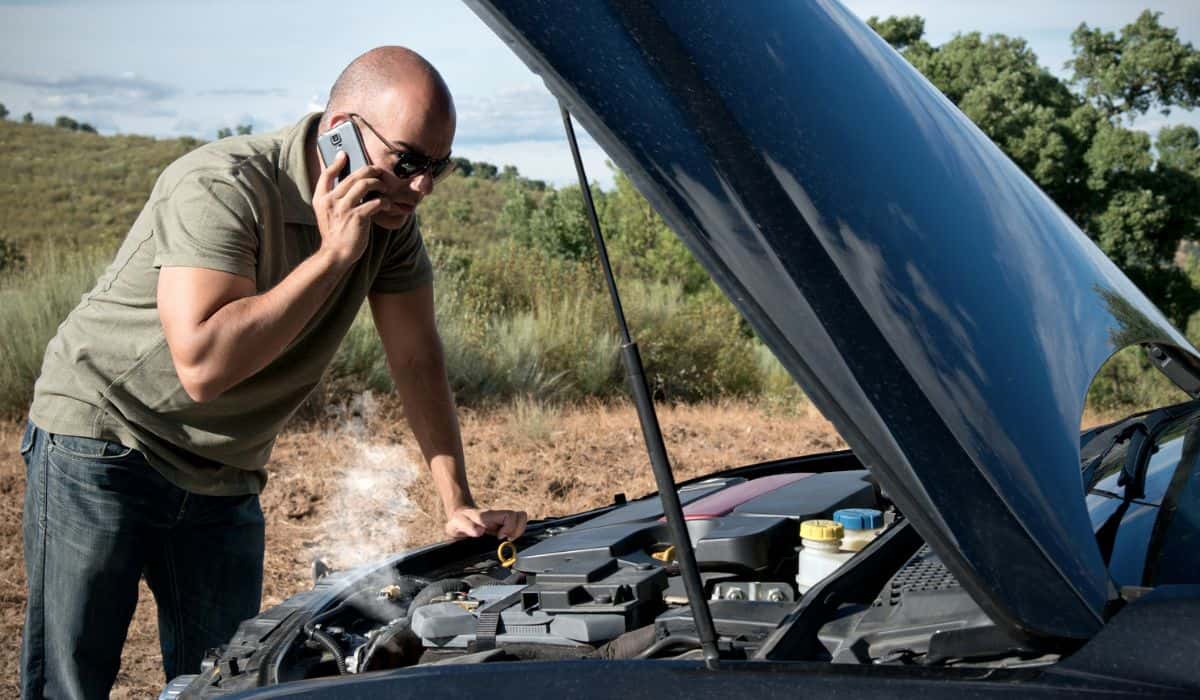Can Your Car Overheat Due to Too Much Coolant?
More coolant can absorb more heat. So, you might think it’s possible to increase the boiling point and decrease the freezing point of your coolant tank just by adding a high ratio of coolant. However, this is a common misconception, and doing this can backfire. But can your car overheat due to too much coolant?
Your car radiator can overheat if you exceed a 50/50 coolant-to-water ratio, as the liquid will absorb more heat and won’t release it due to the absence of water molecules. When the radiator heats up, the liquid expands, which produces more heat and pressure inside the system, causing overheating.
Antifreeze is an important part of keeping your vehicle maintained. At the same time, it’s physically dangerous to handle and needs to be balanced with water to avoid problems. Let’s take a detailed look at how too much antifreeze can cause overheating, other kinds of damage that antifreeze can cause, and what your options are for safely removing excess coolant from your vehicle.
Can Too Much Antifreeze Cause Overheating in Your Car?

Yes, too much antifreeze can generate high-temperature levels in the radiator, eventually overheating the engine. However, the possibility of the engine radiator overheating due to too much coolant will depend on the type of coolant, the engine type, and the radiator design.
Pure antifreeze isn’t effective for engines, and it must be mixed with water before being put in the radiator. The best water-to-coolant ratio is 50:50, which increases the boiling point to 250 F in hot seasons, and decreases the freezing point to -40 Fahrenheit in cold weather.
You can increase the coolant to 60% if it’s very cold, which can reduce the freezing point to -50 degrees.
However, too much coolant will decrease the boiling point and increase the freezing point of the coolant system. The antifreeze absorbs the heat, and it transfers that heat to the water molecules, maintaining heat levels in the engine radiator.
When you increase the antifreeze-to-water ratio, it traps more heat, but does not release it due to the absence of water, which therefore keeps the heat inside the radiator. Because too much antifreeze holds less heat per unit volume, the temperature level further rises when the radiator heats the liquid. As it expands in its volume, it creates more heat and pressure.
This additional heat eventually results in the engine overheating.
What Happens If Your Engine Overheats?
An overheated engine can cause serious damage and should be avoided at all costs.
Here are some consequences of an engine overheating:
- Engine detonation: The engine will lose its power under exceeding heat and pressure as it increases the octane level of the fuel.
- Pre-ignition: Exceeding heat in the radiator generates hot spots in the combustion system, which may provide pre-ignition to the fuel.
- Damage to holes and pistons: The hot areas inside the combustion system may also burn the holes and pistons, as it generates hammer-like blows in the engine system.
- Swelling: The heat and the pressure inside the system may swell some of the components like exhaust valves or cylinders that are typically made of aluminum, a sensitive material to heat.
Modern cars usually have computer systems that work effectively to detect possible overheating. When this happens, the system sends risk messages to the warning lights on your vehicle dashboard.
When you see these warning lights, you should pull over as soon as possible. Open the bonnet and let the car cool down. Once the engine has cooled, put water in the coolant tank, making sure that the water and coolant ratios are balanced.
What Happens If You Put Too Much Antifreeze in Your Car?
Too much antifreeze in a car radiator may result in multiple mechanical problems like overheating and engine damage.
Here are common problems that you may face if there’s too much coolant in your car:
Overheating

When you put a high concentration of antifreeze in the coolant mix, it absorbs more heat, but doesn’t expel it outwards since the water is low in quantity. This ultimately retains the heat inside the engine, causing radiator overheating.
This situation can affect the vehicle’s belts and alternators, reducing their performance.
Overflowing
The heat inside the radiator causes the coolant to expand in volume, which eventually overflows because the coolant tank is already full to its “max” mark.
This may cause various environmental problems. It also risks your health, as ethylene glycol fumes can cause various respiratory problems.
Engine damage
Since the coolant overflows when you put too much coolant, it can damage engine hoses or cylinders. The coolant also becomes unable to prevent rust and corrosion, which eventually leads to engine damage over time.
If you continue driving, then this overheating can result in a dead engine, and you’ll need to replace the engine.
Engine Wiring Damage
Overheating and overflowing of coolant may also damage engine wires, as they are spread all over the engine system. These wires control vehicle electrical systems, sensor systems, and vehicle computer systems.
So, damage to the wiring system can cause transmission issues, lighting issues, as well as odometer problems.
Head Gasket Breakage
Overflowing material may also cause the head gasket to break and leak in the intake manifold, which can affect other surrounding parts of the system.
How Do You Get Overfilled Coolant Out?
Professionals suggest multiple ways of getting the overfilled coolant out of the coolant tank including using tools like a turkey baster and plastic tubes.
Here’s how you can effectively apply these methods:
The Turkey Baster Method
A “turkey baster” is a vacuum tube with a vinyl or rubber bulb on one end. Press the bulb with mild force until it is squeezed tight. Then, keep the bulb side in your hand, and put the tube’s other side inside the coolant tank.
When it is placed properly, release your grip over the bulb so that it can suck some of the liquid out of the tank. Take the tube out. Then squeeze the bulb again after placing the tube’s other side into an antifreeze bottle.
This will release all the coolant. Repeat this process until the coolant reaches the “max” mark on the coolant tank.
Use Plastic Tubes
You can remove the extra antifreeze by using plastic tubes. Put the tube inside the coolant tank, and use your home vacuum cleaner to get the extra fluid out of the tank. Cover the tank with a clean cloth or cap, and release the liquid out in an empty container.
Open the Radiator Valve
Opening the radiator valve can also help release excess coolant. Find the valve cap at the bottom of the radiator, and open it. Let the antifreeze drain out into a container, and quickly close the valve head as the liquid is reduced to the desired level.
Use a Rag to Soak the Coolant
Soak a clean rag into the coolant tank, and squeeze it outside in an empty container. This method seems simple, but it could lead to serious respiratory or skin problems if you don’t wear a mask or hand gloves — so be sure to protect yourself.
You may repeat this process multiple times to get your desired liquid level in the tank, as you can only put a small rag in the tank that can soak very little liquid.
